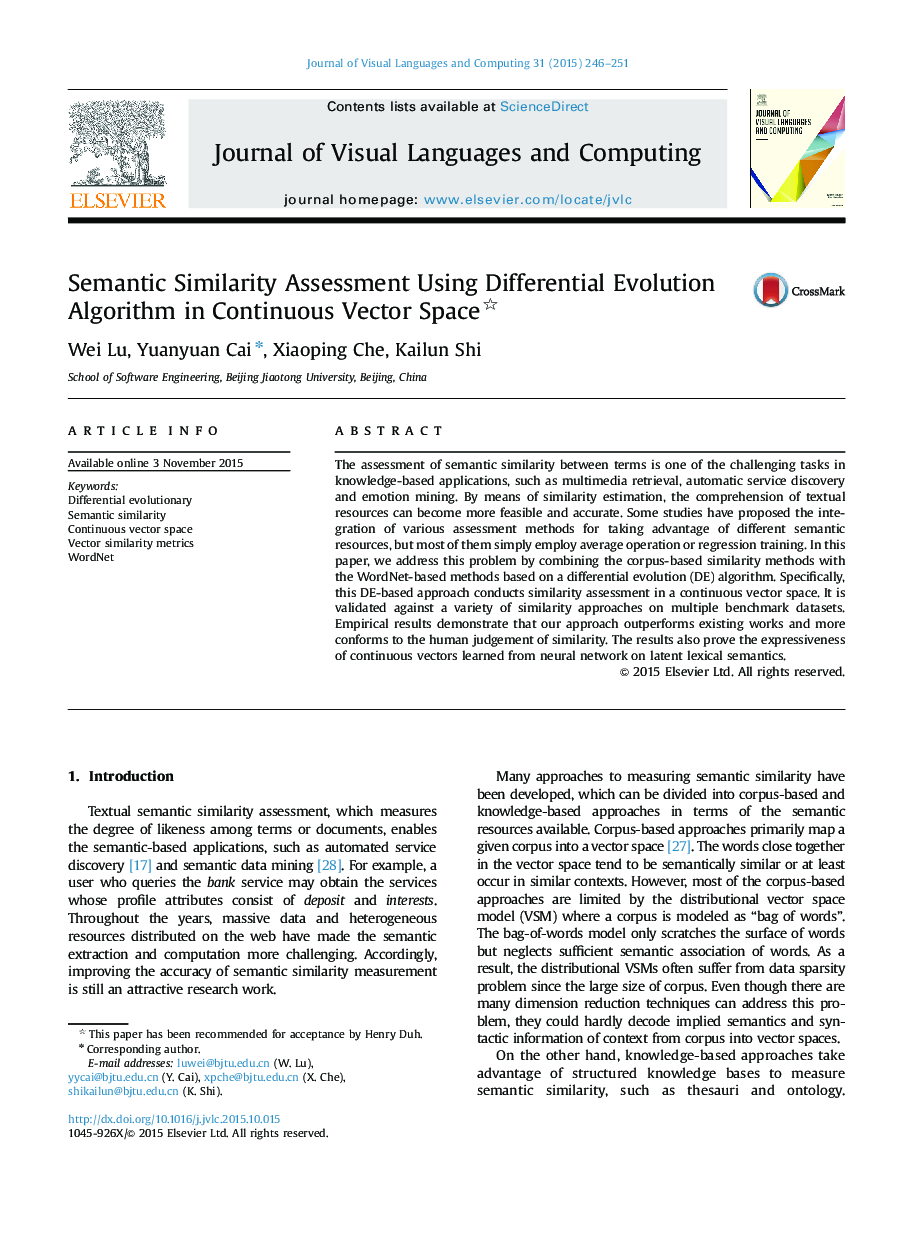| Article ID | Journal | Published Year | Pages | File Type |
|---|---|---|---|---|
| 523443 | Journal of Visual Languages & Computing | 2015 | 6 Pages |
•We combine corpus-based and WordNet-based similarity methods based on differential evolution (DE) algorithm.•We assess semantic similarity between terms in a continuous vector space to improve similarity computation in terms of accuracy.Empirical results demonstrate that our approach outperforms related works and conforms more to the human judgement of similarity.•The robustness of our approach is presented by the steady results.•Our findings provide a new perspective to estimate lexical semantics.
The assessment of semantic similarity between terms is one of the challenging tasks in knowledge-based applications, such as multimedia retrieval, automatic service discovery and emotion mining. By means of similarity estimation, the comprehension of textual resources can become more feasible and accurate. Some studies have proposed the integration of various assessment methods for taking advantage of different semantic resources, but most of them simply employ average operation or regression training. In this paper, we address this problem by combining the corpus-based similarity methods with the WordNet-based methods based on a differential evolution (DE) algorithm. Specifically, this DE-based approach conducts similarity assessment in a continuous vector space. It is validated against a variety of similarity approaches on multiple benchmark datasets. Empirical results demonstrate that our approach outperforms existing works and more conforms to the human judgement of similarity. The results also prove the expressiveness of continuous vectors learned from neural network on latent lexical semantics.
